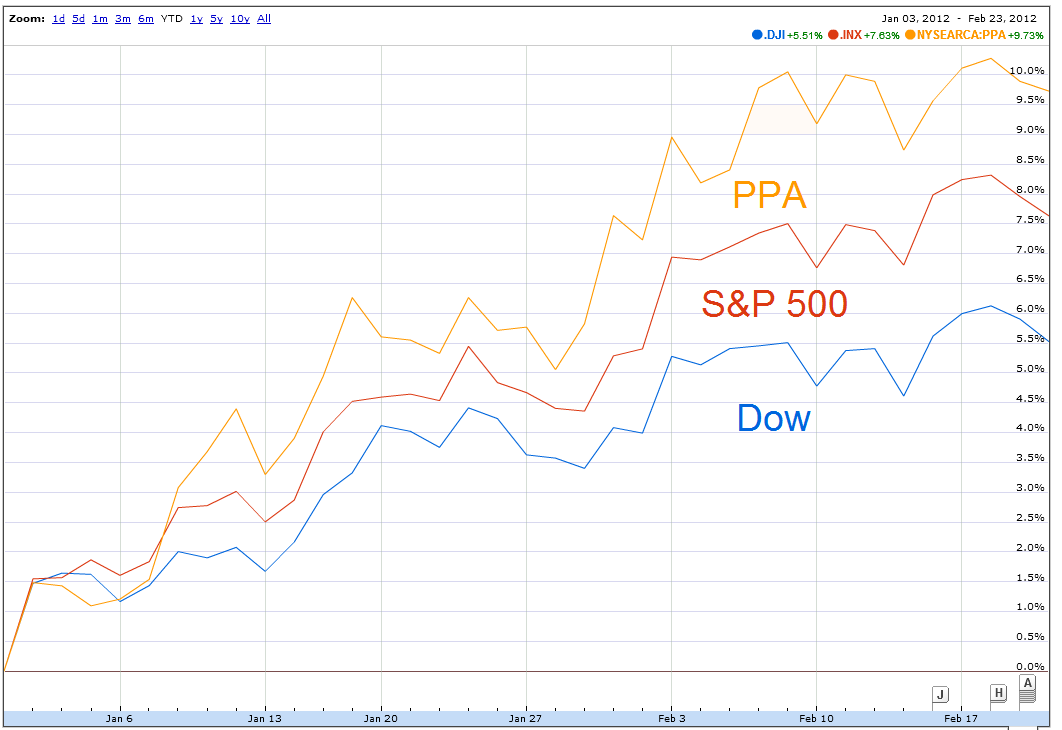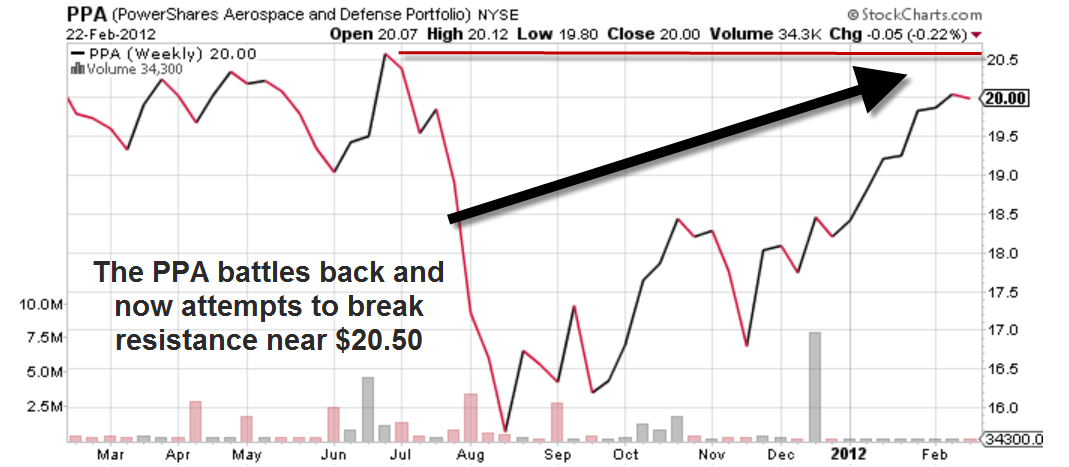By Michael Tarsala
When someone in the NFL – like Colts owner Jim Irsay – says “it isn’t about the money,” then you know it must be all about the dinero, moolah and the Benjamins.
And when Russian President Vladimir Putin says spending $770 billion on adding 400 nukes and 2,300 tanks is not a militarization of his country’s budget, call it what it is: a challenge to the U.S. to match the Russian military, dollar for ruble, over the next decade.
Whether the U.S. economy can afford to keep pace appears moot – at least from a political standpoint. What lawmaker is going to sign off of big cuts to the military amid a sudden return to Cold War-like rhetoric from Moscow, especially with U.S. elections approaching?
That’s why I doubt President Obama will be able to cut even 1% of the core defense budget in 2013. And the $487 billion in defense savings he plans over 10 years now looks as likely as Iran’s nuclear ambitions being 100% peaceful.
The question for Wall Street: How long are 20 out of the 25 analysts covering Lockheed going to stick to their “Hold” and “Sell” ratings amid rising global tensions and continued gains for the defense group?
Here are five reasons U.S. defense spending may continue to be strong in the coming years, despite planned cutbacks and the end of the Iraq War, and how that could drive this sector higher:
1) Fears May Have Been More Than Factored In
There are some smart people who agree with me.
Globe & Mail blogger David Berman believes the worst of the budget fears may have been priced into the market by late last year.
Going forward, the overall budget risk to contractors could be minimal, as detailed in a Washington Post story with comments by Byron Callan at Capital Alpha Partners.
And Steve Clemons, editor-at-large at The Atlantic, cites a study that suggests the “real” amount of spending is likely to keep rising.
2) Even Modest Cuts May Be Pushed Back
Read Jeremy Herb’s Defense Blog for background. There’s lots of bickering on Capitol Hill about the planned $487 billion in long-term defense cuts. But there’s little action. Failure to pass defense cuts this year could result in a “sequestration”, or self-imposed spending penalty trigger set for January 2013, after the presidential election.
You have to question whether President Obama believes in defense spending enough to fight hard for it during his campaign, and if there’s any political will after the election to significantly cut the defense budget.
3) China/U.S. Ties Are Weak, Too
China’s Vice President Xi Jinping visited the U.S. last week. The high point was his attendance at an NBA game – he seemed to enjoy watching the Lakers thrash the Suns (no gloating, Shimmy — payback came in the game Sunday night). Other than that, there appeared to be no meaningful thaw in relations. Tension remains over President Obama’s plan to “pivot” U.S. military power toward Asia — or if you read between the lines, the South China Sea.
4) The Market Doesn’t Believe It
So far this year, the PowerShares Aerospace & Defense ETF (PPA) is up 10%, versus an 8% return for the S&P 500 as of 2/23. It’s not strong outperformance, but you wouldn’t expect any at all if the market was really expecting huge budget cuts.

Source: Google Finance
The chart to watch is below: The PPA has gained back nearly all the ground it lost following a more than 20% peak-to-trough slide in July and August last year, right around the time a new budget was being proposed by President Obama and the Congress. If it can bet above resistance in the 20.50 to $20.80 range, there’s technical room to run.
 Source: Stockcharts.com
Source: Stockcharts.com
5) Model Managers Are Still Buying Defense Names
Defense stocks are not widely held by the majority of Covetor’s 180 model managers. However, several notable Covestor managers have bought stocks in the group since last year’s swoon.
David Fried, a model manager focused on high-yield buybacks, timed his Lockheed purchase exceptionally well, getting in shortly after the group’s massive selloff last year. It’s a stock that looks to fit his strategy, as it has one of the highest dividend yields in its group.
Buying continues, even after the group’s run from the August lows. ASB Capital, which runs a Large Cap Core Equity strategy that has beaten the market’s return since February last year, bought United Technology this month at a price of $81.20. Note that Motley Fool considers United Tech a possible “Buffett” play.



